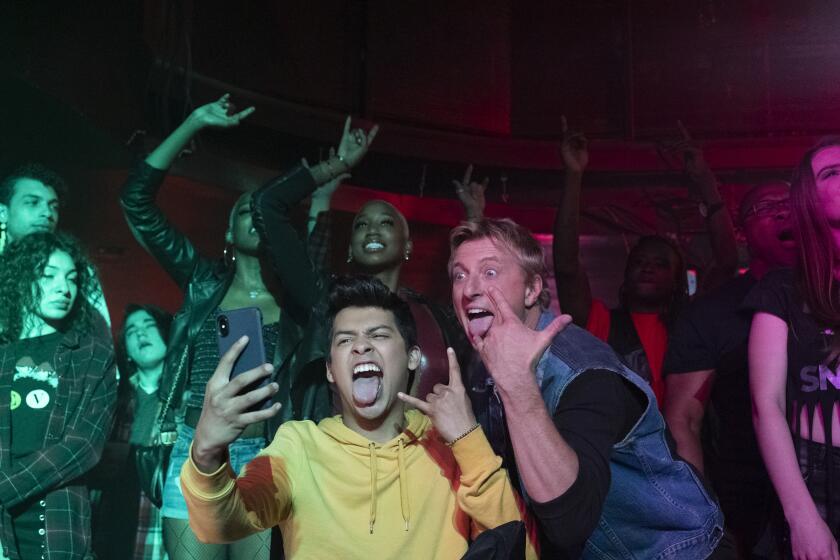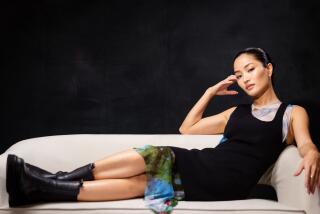To reprise her ‘Karate Kid’ role in ‘Cobra Kai,’ Tamlyn Tomita had some ground rules
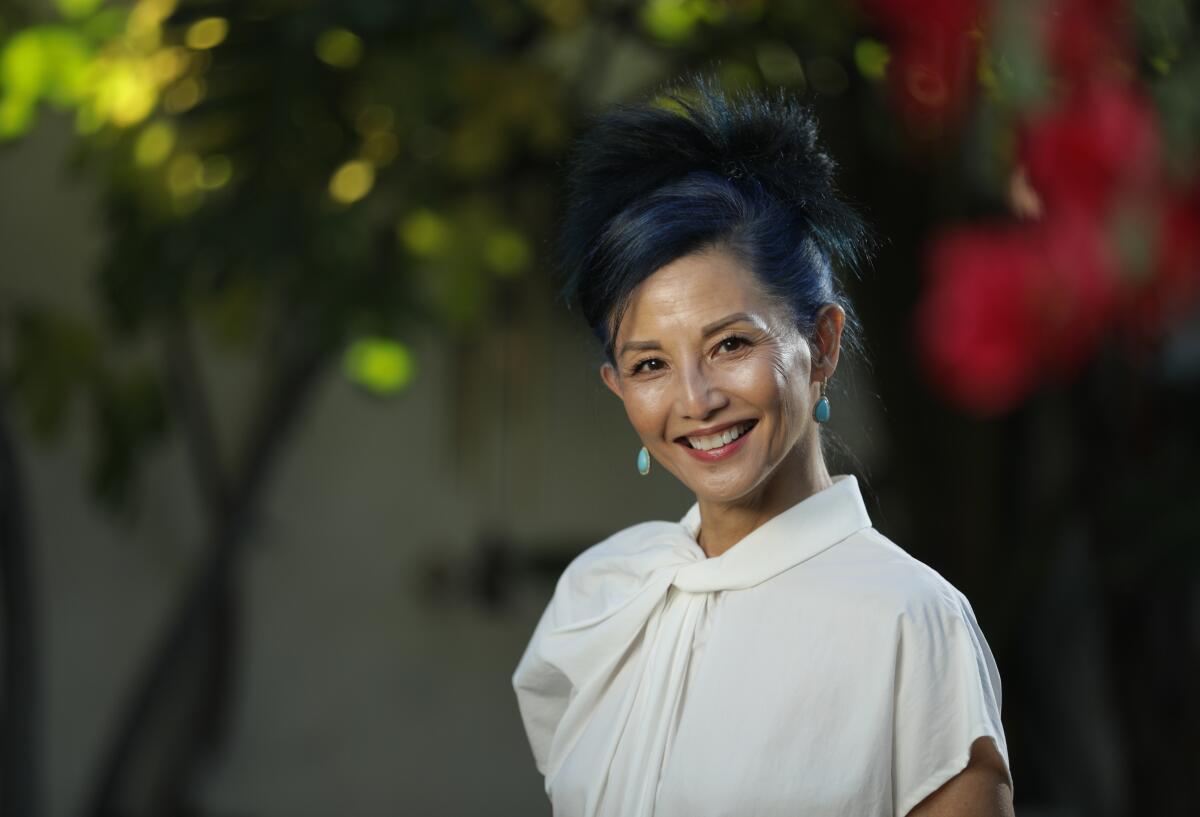
Cue Peter Cetera’s “Glory of Love”: In the third season of Netflix’s nostalgia-fueled hit series “Cobra Kai,” which premiered New Year’s Day, familiar faces return to the “Karate Kid” universe — including Tamlyn Tomita as Kumiko, the Okinawan dancer who became Daniel LaRusso’s paramour in 1986’s martial arts sequel “The Karate Kid Part II.”
But 34 years after the film that launched her career, Tomita had conditions before agreeing to return for a special two-episode arc on the series. As a teenager acting alongside Ralph Macchio and veterans Pat Morita and Nobu McCarthy in the second “Karate Kid” movie, she hadn’t known what decades of experience would eventually teach her: how to fight for authentic onscreen representation.
“I said I would love to, this would be so fun, but the only caveat is that because I’m older, because I’m a little bit more knowledgeable and I’m going to fight for it anyway — I need to be able to inject a truer picture of Okinawa,” says Tomita. Born in Okinawa to a Japanese American father and an Okinawan Filipina mother and raised in the San Fernando Valley, she brought parts of her heritage to the wiser Kumiko of “Cobra Kai” and lent her own cultural items to the Atlanta set.
A day after driving to Sacramento to cast an electoral college ballot for President-elect Joe Biden and Vice President-elect Kamala Harris — chosen by Rep. Judy Chu (D-Monterey Park), her onetime UCLA professor, to be part of “an extraordinary exercise in witnessing our democracy prevailing” — Tomita dove into her prolific screen career, her return to the “Karate Kid” franchise and her plans to build an inclusive new space for storytellers in L.A.
William Zabka’s Johnny Lawrence never left the San Fernando Valley circa 1984. And Netflix’s “Karate Kid” sequel plays with that disconnect brilliantly.
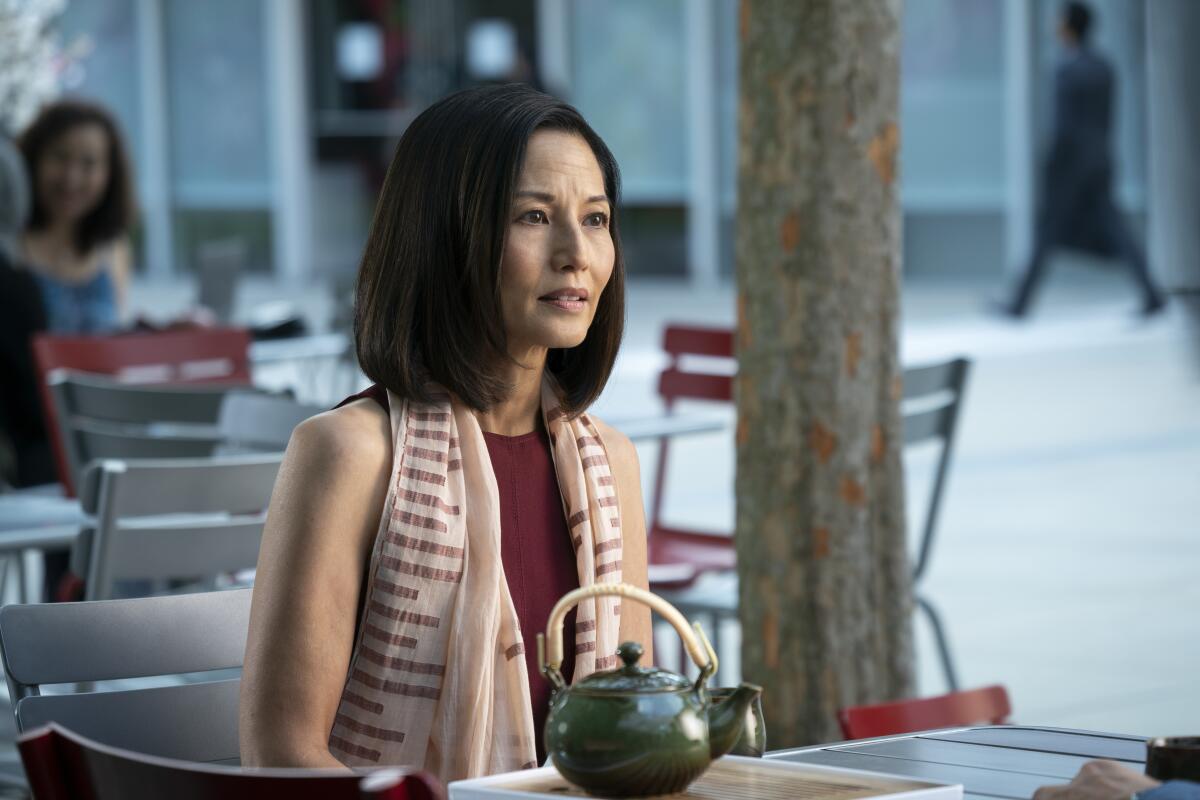
As a designated elector in the electoral college, you cast a historic vote for Joe Biden and Kamala Harris. What was that experience like?
I was expecting to become emotional, but it didn’t come at the places I prepared myself to be. It was signing my name to Kamala Harris’s ballot. Because in full transparency, I cried when President Obama was elected the first time, in 2008, and it’s been like, “Let’s go, let’s continue on with the hope agenda.” And now it’s the heal agenda. Just signing my name to a Madam Vice Presidential ballot was extraordinary.
Rep. Judy Chu cited your work “advancing AAPI representation in Hollywood” as one reason she selected you for this role. How did this opportunity come about?
Judy Chu was my first Asian American women’s studies [professor] at UCLA. And Bob Nakamura, who founded [nonprofit media organization] Visual Communications, was my Asian American film studies [professor]. UCLA was my mother lode of Asian American consciousness. Studying it, researching it and finding out all our collective histories was due to those two. Judy really tested me and challenged me as far as my awakening as a woman, as an Asian American, and as an Asian American woman and how to participate — how to speak out and speak up.
Now with “Cobra Kai” you’ve come full circle in another way. But earlier in your career it was at times difficult to be so recognized as Kumiko from “Karate Kid II.” How has your relationship with the character evolved over time?
It’s hard to break away from that because everybody wants to see more of the same. Of course, people thought I was from Japan or from Okinawa and I’d go, “No. I’m from the San Fernando Valley.” But that was my impatience and my own frustration. I went through that period. I can still be an a— pertaining to having the honor of wearing the Kumiko garments and just wanting to take it off and wear a leather bomber jacket! But again, because I’m lucky to have aged over the years, she is still an integral and important part of me and I want to put her back on and say: “She still fits.”
Was there a point in your life when you were just over hearing [“Karate Kid Part II’s” theme song] “Glory of Love,” by Peter Cetera?
It goes in line with when I was sick and tired of Kumiko herself. But then when people would play it as my entrance music I’d go, “You know what? Who else has an entrance song, first of all ... and who else has a more recognizable one?” Everybody knows that beginning. You just have to play those first five notes and everybody knows it. So I embrace it. It’s about coming full circle and that means appreciating the fullness of the gifts it’s brought so many people.
It has been 30 years since “The Karate Kid Part III,” and Ralph Macchio is still alive — and kicking.
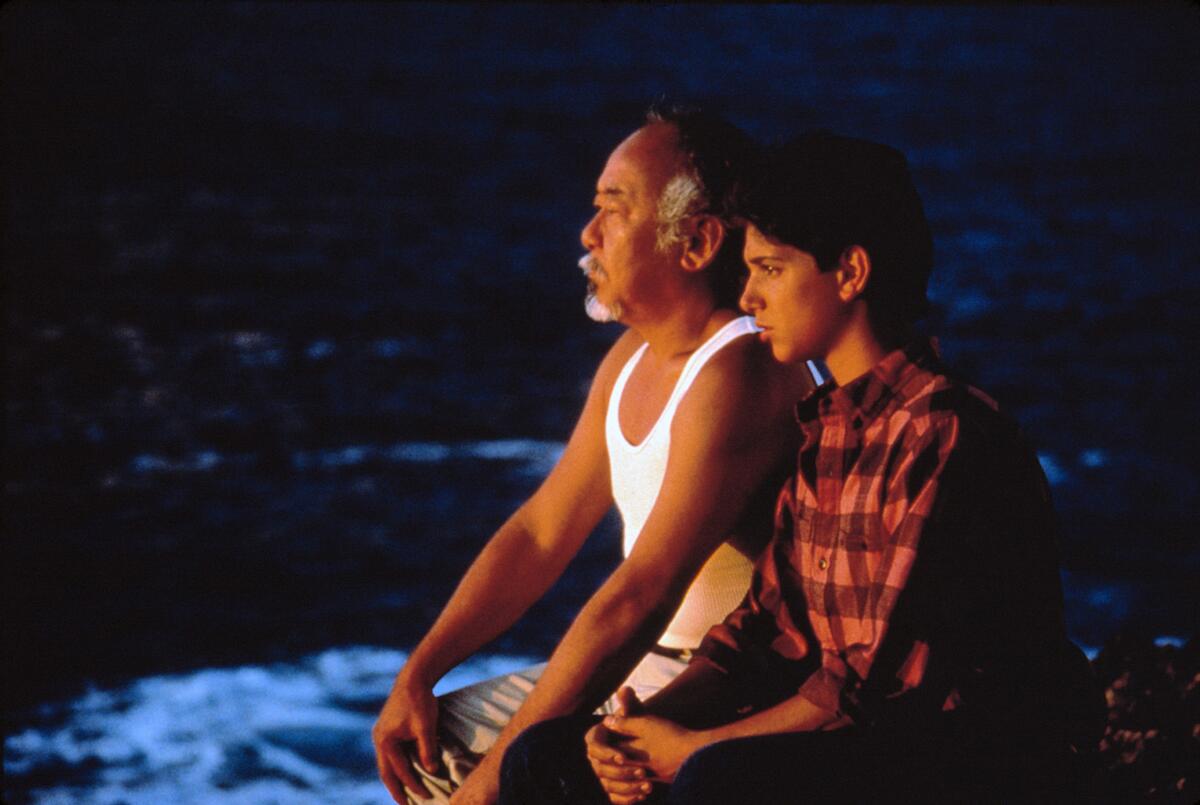
This is a controversial question, but do you agree with [Gene] Siskel and [Roger] Ebert, who said the first “Karate Kid” was better than “Karate Kid Part II”?
You know what? I really do think the original “Karate Kid” is the better one. And I think it’s because of the story we didn’t find out about until later, that the studio didn’t want the scene of drunk Mr. Miyagi with his Medal of Honor. Come on! That’s the scene that steals it for everybody.
A valid point. It’s the scene Pat Morita reportedly fought to keep that the studio wanted to cut: the moment where Daniel learns that Miyagi not only fought in WWII, but lost his family who died while incarcerated at Manzanar.
Yes! Can you imagine it without it? Some people gloss over it, especially if you’re not Japanese American: “This is an American story? This happened?” Knowing that he fought for that scene to be kept... And that’s what makes the original the best one.
You make a convincing argument.
I would like to see the Netflix show “Miyagi-Do” too, with Chozen [played by Yuji Okumoto]. Because he’s the real marriage, the interconnectivity, of what it means to be East and West, karate being embraced by both cultures and what that means. Let’s get them together … let’s see where they’re going to take us, the audience, for Season 4.
I said I would love to, this would be so fun, but the only caveat is that because I’m older, because I’m a little bit more knowledgeable and I’m going to fight for it anyway — I need to be able to inject a truer picture of Okinawa.
— Tamlyn Tomita on reprising her “Karate Kid” role
What was it that brought you back into the world of “Karate Kid” for this season of “Cobra Kai”?
The three amigos, Josh [Heald], Jon [Hurwitz] and Hayden [Schlossberg], emailed me out of the blue in 2019. And I said I would love to, this would be so fun, but the only caveat is that because I’m older, because I’m a little bit more knowledgeable and I’m going to fight for it anyway — I need to be able to inject a truer picture of Okinawa. Because I didn’t know anything back then, and the only sense of Okinawa [in “The Karate Kid Part II”] is coming through [screenwriter] Robert Mark Kamen’s interpretation of his time spent in Okinawa. I know Pat [Morita] did as much as he could, but he’s a [second generation] Nisei of Japanese descent, which is different.
[I asked] if I could get the script ahead of time and translate things from Japanese to hōgen, or Uchinanchu, which is the Okinawan dialect. And I also took it upon myself to go to the Okinawa Assn. of America and ask them for the correct Okinawan choreography to “Tinsagu nu Hana,” which is the song that me and my mom made up the dance to in “Karate Kid II,” because I wasn’t choreographed for that section of the film. And in “Cobra Kai” you only see two seconds of it, but at least I got to inject as much Okinawan as I could.
The “Karate Kid” franchise, including “Cobra Kai,” has always been made by white male creators despite being rooted in Japanese cultural traditions. How do you feel, whether it’s placed upon you or taken upon yourself, about whether a performer should bear the responsibility of bringing authenticity to a project?
There are two different impulses. As an artist, we have the responsibility to create that character as authentically as possible. But in ’85 I didn’t know anything about karate and “Tinsagu nu Hana,” the song. The official choreographers for “Karate Kid II” were Nobuko Miyamoto and Jose De Vega, and they were responsible for turning the Obon [Japanese folk] dance to face the camera. [Director John G. Avildsen] said, “Can you create an Obon dance that has the dancers turn around or has more fun, kinetic movements so the camera can capture them?” Because in Obon dance, you just face the person in front of you.
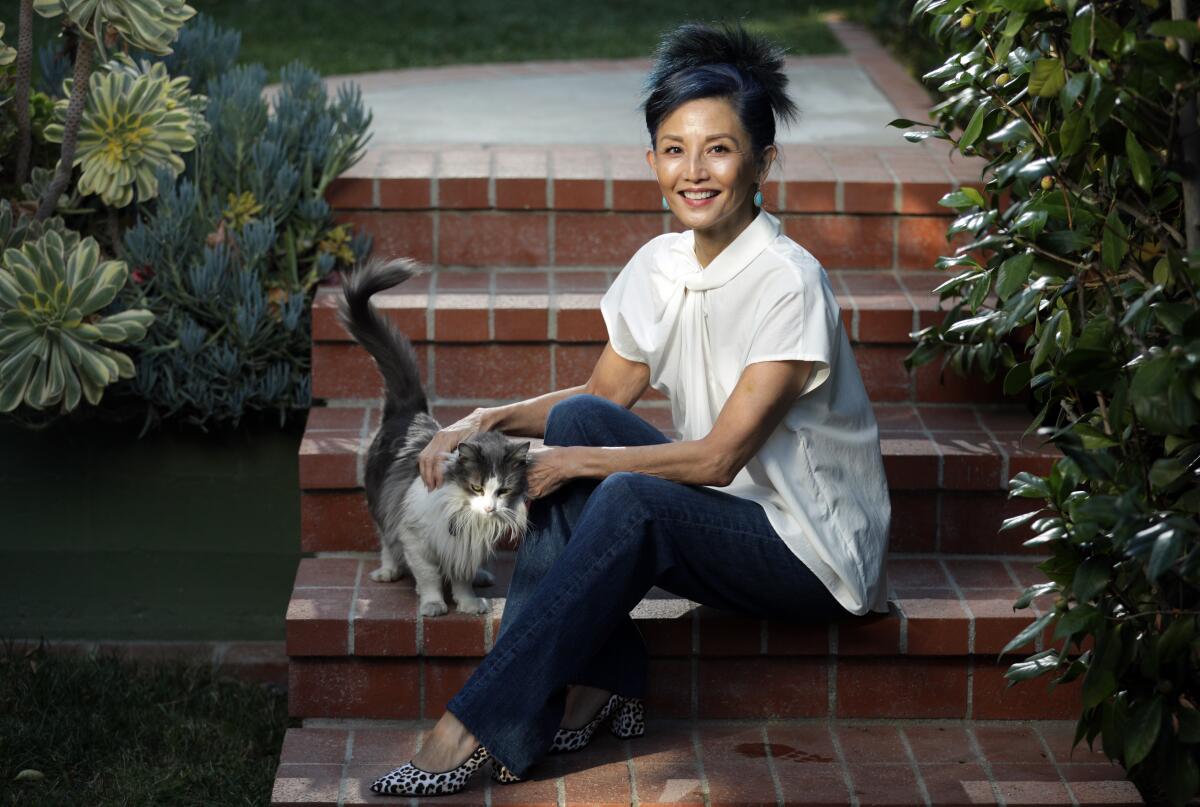
My memory is that the day we were filming that on the bridge, the karate and the dance scene, I’m going, “Mom! Do you know any Obon dances with karate?” And she goes, “No!” “I think I have to do some but there’s nobody teaching me.” I didn’t know anything about acting, I didn’t know who I was supposed to call. Am I supposed to call the director?
Was it just assumed you’d know what to do?
Tamlyn has been Obon dancing since she was 12 or 13. My mom didn’t start Obon dancing until her 60s. But she knew that I knew Obon dancing, so we just made up stuff and tried to be as broad as possible so people could see the connection between dance and martial arts, which is important to know because Bruce Lee was a champion ballroom dancer and martial arts king.
Having that visceral memory of putting together karate and dance in “Karate Kid II” when I’m coming back to “Cobra Kai,” it re-echoed. I have to reflect the little town, the little island that I come from, that I was born in, where my mother’s family is from. I have that responsibility to reflect it and I’m also privileged and lucky enough to know it. I’m not going to throw that onto every other actor who has some ethnic background and say, “You should know it.” That’s upon the individual and upon that artist.
And that’s what I’d like to put out. We’re trying to mesh our worlds of what it means to be American, what it means to be Japanese American and in the bigger Asian American diaspora. I can’t dictate that to the filmmakers or the creators or the storytellers, but if they are going to tell that story they have the responsibility to tell it as authentically as possible, and to reach out to folks who can help them achieve that vision with the knowledge that we’re always going to bend to artistic license.
For the cast of AMC’s ‘The Terror: Infamy’ and reporter Jen Yamato, the re-creation of a Japanese American internment camp brings up painful family histories.

What gave you confidence that “Cobra Kai” would honor that sense of cultural responsibility?
I’m so lucky, because I have the ability and the privilege and the luxury to say no. If they’re not, I’m not going to be saddled with another interpretation of what Okinawa is. It was that important to me to bring three pieces of luggage with Okinawan artifacts and art that could color the world and the sets that I was on, to reflect what it means to be Okinawan. And I have to give credit to the Okinawa Assn. of America in Gardena.
What were some of the pieces you brought to set?
I borrowed a sanshin, which is the Okinawan version of the shamisen, the three-stringed Japanese banjo, from the Okinawa center. I brought tchotchkes from my house that were Okinawan arts and crafts and we hung it up as set pieces, because where we shot it in Atlanta they’re not going to get a lot of Okinawan stuff. I tried to do the best I could with reprising [Kumiko] and reprising the world of Okinawa. And I give them credit, they were all welcoming. They said, “Yes, let’s do it.”
Were you happy with how Kumiko was presented on the page when you first read the script?
Yes, I was. I think there were a lot of things unsaid, because I don’t think those three guys, as young as they are, know how to speak as a woman and they didn’t consult me. Are there things that I would have liked to have said as Kumiko? I think so. But again, I knew as Tamlyn that I had to serve the story. I was just happy to be in service of that but also to serve the giving of the letters to Daniel-san. That’s what was important. And to know that Kumiko lives in the hearts of so many ... I don’t need to write it, I don’t need to speak it. I think everybody gets to fill out the story for themselves. A certain look in their eyes will say, “I will love you, always.” And I think that’s enough.
It’s 1986, you’ve just made your first movie, you have your first agent, you made an album — what pathways did you see in front of you? What was your experience of trying to break into Hollywood at that point?
That was a real awakening, because that’s when I realized what kinds of roles were out there. It was not a whole lot. I think my first thing straight after “Karate Kid” was “Tour of Duty,” and I played this sweet Vietnamese villager who happens to be the assassin. There were not a lot of roles out there that were not the “Vietnamese refugee,” the “Hmong refugee,” the “Chinatown episode.” I started to turn to independent film or stage and started to see the breadth of opportunities that were more available to me and to other actors of color.
“Joy Luck Club” was another important project for you. But even back in 1993 the cast were saying what we’re still hearing today: They hoped that this would be the film that finally opens the door for Asian representation in Hollywood.
I think we learned that change comes excruciatingly slow, and we have to keep opening the door and propping that door open. Make sure the door doesn’t close again! I think the change has come to include more stories out of Asia. In my mom’s Japanese magazines when I was 7 or 8, I saw the Four Leaves and thought, “They look like me.” They looked like the 1960s version of BTS, so when I see BTS and I see Blackpink, I see the connectivity and I’m just so happy that so many of us get to see the talents of so many people from elsewhere. Let’s just open those blinds and see what’s out there.
‘Asian Americans,” a five-part PBS docuseries, chronicles the history of Asian Americans in the U.S.
You’ve played so many different kinds of characters in TV and film, including a “Tamlyn” and a “Pamlyn” — and now you’re on “Star Trek: Picard” and there are YouTube videos deep diving into very specific debates over your character’s origin.
I have not confirmed this but this is my own interpretation: I know I came in with another name. It was not Commodore Oh, it was Commodore Something Else. But that’s when Sandra [Oh] won her [lead actress Golden Globe] and I think they wanted to honor her. Why else would it change to “Oh”? If I go on with the show, I’ll ask the more important questions. But for now I’m just happy to be part of that universe.
You first starred with Cary-Hiroyuki Tagawa in Kayo Hatta’s 1995 indie “Picture Bride.” A few years ago you reunited on “The Man in the High Castle,” playing an Okinawan artist in an alternate World War II history. How were you able to make that role your own?
Apparently Cary said, “I want Tamlyn,” because I did not have to audition for that. Cary, being another Nikkei [person of Japanese descent] and Nisei Japanese American, he was deemed the authority on what it means to be Japanese because he’s much closer to the Japanese culture. Cary was able to say, go for it. Reflect your heritage. So I was able to justify that I would be a descendant of the Okinawan women who practice beautifying their hands to show that these are my skills, this is where I come from, this is who I am.
I encourage anybody in the arts and storytelling, if you can reflect your heritage and you want to — you don’t have to all the time! — be brave and ask, “Can I do it?” Because I didn’t know that during “Karate Kid II.” I didn’t ask anybody. But [have] the courage to say, “Can we do this? Because it’s a beautiful part of my culture and being an American I’d like to introduce the whole world to this. That’s what I’d like to convey.” We have more power than we think we do.
Another thing that I continue to fight for especially during this pandemic time is the representation of Filipino nurses on medical dramas throughout the decades of American television. I fought for a Filipino nurse regular on [“The Good Doctor”] in the writers room for all three years. But shooting in Canada, there’s not a lot of opportunity for persons of Filipino heritage. It’s something that I’m always very cognizant of. Where are the Filipino nurses? Whether they’re Filipino born or American born, that’s what’s been missing in a lot of the storytelling of American television.
As much as you’ve been able to bring your Okinawan Japanese heritage into roles, have you wanted to represent that part of your background more?
It’s something that I’m very proud of. But I defer to my other Filipino American female artists and storytellers because they’re closer to the true Filipino experience. I’m always seeking out Filipino stories. I’m there to be the cheerleader, to be the amplifier, to be the spotlight focus person to say, these stories exist. And outside my own personal heritages there are so many stories out there that I’ve had the opportunity to tell. I’ve played Vietnamese, I’ve played Hmong, but I know there are actors out there of those ethnicities who could have played them more authentically and more truthfully.
What led to your decision to create your next project, a theater inclusive to underrepresented voices?
My husband and I are creating a theater, Outside In Theater, that will create stories that are usually underrepresented. That will give chances to people to tell their stories. It’s to showcase the stories that need to be told because they haven’t been given the opportunity to. We bought the building in October and it probably won’t be completed until late 2021, but it is a theater/streaming space. Outside In is going to be in Highland Park, and we’re trying to give opportunities to people who don’t get the chance to tell stories — to invite them in, to know that they all belong.
More to Read
The complete guide to home viewing
Get Screen Gab for everything about the TV shows and streaming movies everyone’s talking about.
You may occasionally receive promotional content from the Los Angeles Times.
